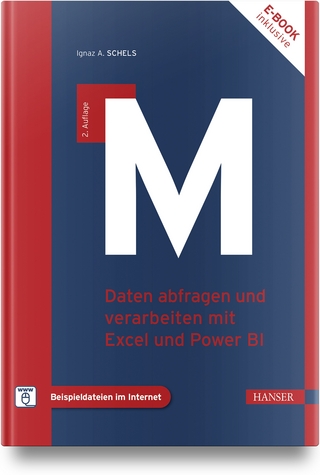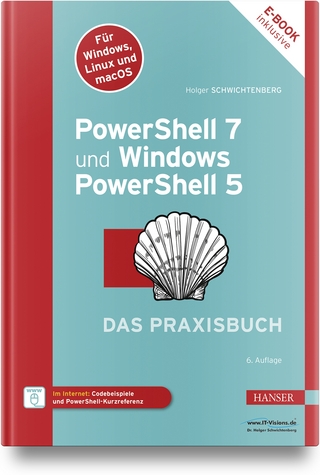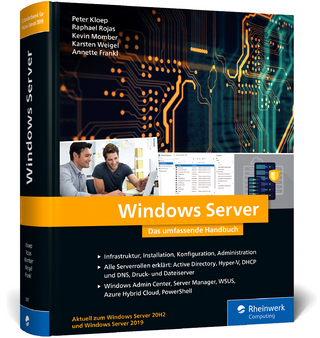
Little Windows 98 Book, The (Reissue)
Peachpit Press Publications (Verlag)
978-0-321-19308-7 (ISBN)
- Titel ist leider vergriffen;
keine Neuauflage - Artikel merken
The Little Windows 98 Book is the best, most inviting place to start learning about Windows 98. If you¿re a computer beginner, you¿ll love its entertaining style and easy-to-understand explanations written by critically acclaimed, best-selling author Alan Simpson, and the accompanying humorous illustrations by John Grimes. As part of Peachpit¿s popular "Little"series, The Little Windows 98 Book doesn¿t bog you down with lots of jargon and endless pages of dry technical details, but rather spotlights the essentials so you can get to work quickly. You¿ll find basics such as using menus and dialog boxes, creating files and folders, and working with the desktop, as well as explanations on how to install new programs, send and manage email, and explore the Internet. If you¿re a beginning computer user, there¿s no easier way to get started with Microsoft Windows 98.
Best-selling, critically acclaimed author Alan Simpson has written over 70 computer books. With over 2 million books in print, these titles include Alan Simpson¿s Windows 98 Bible, Alan Simpson¿s Windows XP Bible, and Alan Simpson¿s Microsoft Windows Me Bible. In addition to writing, Alan has also worked as a software consultant, programmer, and university-level instructor.
About This Guide. What This Guide Contains. What's New in This Edition. What You Should Know Before Reading This Guide. How to Obtain the Sample Code. Nate Robins' OpenGL Tutors. Errata. Style Conventions. Acknowledgments. 1. Introduction to OpenGL. What Is OpenGL? A Smidgen of OpenGL Code. OpenGL Command Syntax. OpenGL as a State Machine. OpenGL Rendering Pipeline. OpenGL-Related Libraries. Animation. 2. State Management and Drawing Geometric Objects. A Drawing Survival Kit. Describing Points, Lines, and Polygons. Basic State Management. Displaying Points, Lines, and Polygons. Normal Vectors. Vertex Arrays. Attribute Groups. Some Hints for Building Polygonal Models of Surfaces. 3. Viewing. Overview: The Camera Analogy. Viewing and Modeling Transformations. Projection Transformations. Viewport Transformation. Troubleshooting Transformations. Manipulating the Matrix Stacks. Additional Clipping Planes. Examples of Composing Several Transformations. Reversing or Mimicking Transformations. 4. Color. Color Perception. Computer Color. Specifying a Color and a Shading Model. 5. Lighting. A Hidden-Surface Removal Survival Kit. Real-World and OpenGL Lighting. A Simple Example: Rendering a Lit Sphere. Creating Light Sources. Selecting a Lighting Model. Defining Material Properties. The Mathematics of Lighting. Lighting in Color-Index Mode. 6. Blending, Antialiasing, Fog, and Polygon Offset. Blending. Antialiasing. Fog. Point Parameters. Polygon Offset. 7. Display Lists. Why Use Display Lists? An Example of Using a Display List. Display List Design Philosophy. Creating and Executing a Display List. Executing Multiple Display Lists. Managing State Variables with Display Lists. 8. Drawing Pixels, Bitmaps, Fonts, and Images. Bitmaps and Fonts. Images. Imaging Pipeline. Reading and Drawing Pixel Rectangles. Tips for Improving Pixel Drawing Rates. Imaging Subset. 9. Texture Mapping. An Overview and an Example. Specifying the Texture. Filtering. Texture Objects. Texture Functions. Assigning Texture Coordinates. Automatic Texture-Coordinate Generation. Multitexturing. Texture Combiner Functions. Applying Secondary Color after Texturing. The Texture Matrix Stack. Depth Textures. 10. The Framebuffer. Buffers and Their Uses. Testing and Operating on Fragments. The Accumulation Buffer. 11. Tessellators and Quadrics. Polygon Tessellation. Quadrics: Rendering Spheres, Cylinders, and Disks. 12. Evaluators and NURBS. Prerequisites. Evaluators. The GLU NURBS Interface. 13. Selection and Feedback. Selection. Feedback. 14. Now That
| Erscheint lt. Verlag | 12.11.2003 |
|---|---|
| Verlagsort | Berkeley |
| Sprache | englisch |
| Maße | 190 x 235 mm |
| Gewicht | 703 g |
| Themenwelt | Informatik ► Betriebssysteme / Server ► Windows |
| Wirtschaft ► Betriebswirtschaft / Management ► Wirtschaftsinformatik | |
| ISBN-10 | 0-321-19308-3 / 0321193083 |
| ISBN-13 | 978-0-321-19308-7 / 9780321193087 |
| Zustand | Neuware |
| Haben Sie eine Frage zum Produkt? |
aus dem Bereich


